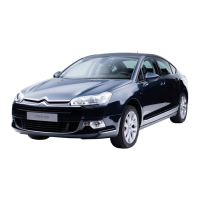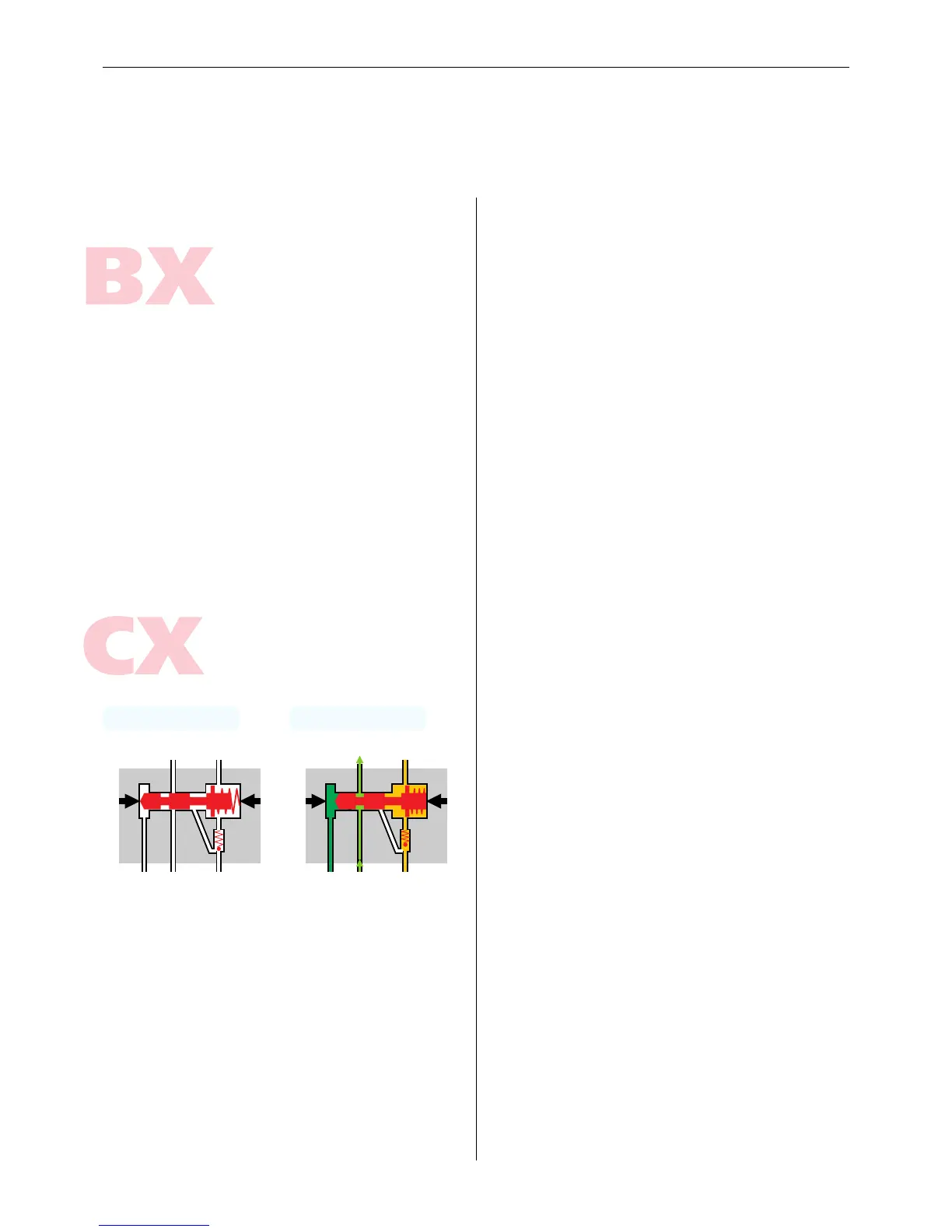U
The Citroën Guide Brakes: Standard braking system 44
Standard braking system
dasdsadsa
3) Back to the suspension and brakes for a second. The rear
sinks imperceptibly or not at all when braking—the amount
of LHM that goes into the rear brakes is infinitesimal—prob
-
ably on the order of 1–2 ccm. Most of the LHM that is 'lost'
is the leakage of the brake valve. At best the rear end can
sink until the rear corrector starts replenishing the pressure,
and that's normally about 3 cm maximum, typically half of
that. In other words: this scarcely produces any anti-dive be
-
haviour. What does produce anti-dive behaviour is the trail
-
ing arm geometry of the rear end. Along with the low pro
-
file of such suspension, the anti-dive behaviour is it's main
reason for being. When the brakes bite, in effect they want
to fix the wheel to the trailing arm. If the car is moving for
-
ward, this automatically wants to move the point where the
trailing arm attaches to the body, down. Voila, the rear end
goes down. Incidentally, this is why HP Cits brake signifi
-
cantly worse going backwards, and also tend to lift the rear
end when doing that.
Stop breaking, please…
CX Breaks have a rear brake force limiter to ensure that
When there is no pressure in the rear suspension (the sus
-
pension is set to low), the force of the spring 4 keeps the
piston in the neutral position, completely closing the feed
to the rear brakes from the brake compensator valve.
When the suspension is under normal pressure, the
force 1 supplied by the rear suspension fluid exceeds the
counter force 2 provided by the spring. The piston stays in
the open position, letting the fluid pass to the rear brakes.
As soon as the driver starts braking, the force 2 increases by
the additional pressure coming from the front brakes, enter
-
ing through the ball valve 3.
As soon as the incoming front brake pressure exceeds
the rear suspension pressure by more than 28 bar (in other
words, the combined force of front pressure and that of the
calibrated spring 4 becomes larger than the rear suspen
-
sion pressure), the piston moves again to the left, cutting
out the additional pressure to the rear brakes, which will
then continue to brake with this constant pressure. To avoid
a sudden cut-off of pressure, a ball valve 3 combined with
a damping ??? is used to smoothen the changes. Bypass
???

